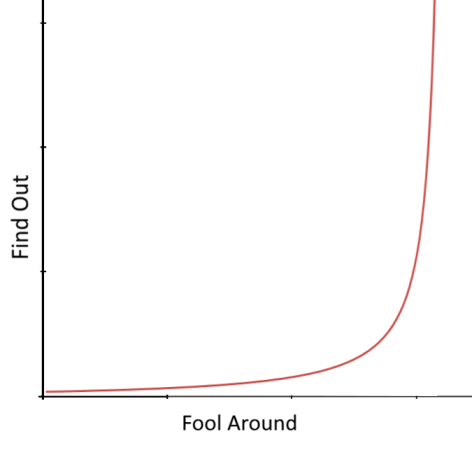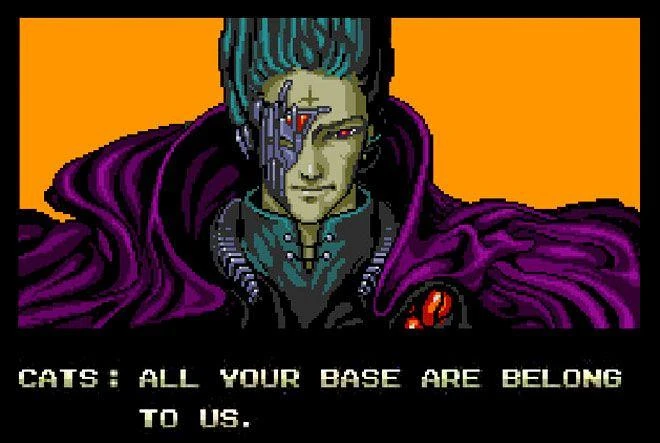Why We Follow Satoshi


For those of us who may never quite make it out of the rabbit hole, I think there’s a certain satisfaction that comes in reading crypto history–gleaning the smallest, poignant insights from the details of the journey to get here.
Whenever I open “The Book of Satoshi,” come across artifacts of the Crypto War I, or read through an old forum debate, I’m transported to very different times. Returning to the present, there’s an awe of how far first principles and an uncompromising adherence to values can take us.
First, Some History
The bedrock of our networked world exists in large part due to the fearless efforts of the Cypherpunk movement of the late ‘80s. While mastering the dark arts of applied arithmetic, these pioneers stood in opposition to the most formidable of adversaries, a united front of nation-states.
Up until about thirty years ago, the only legal encryption was “weak encryption,” which could be broken by accessible supercomputers at the time. “Strong” encryption, the kind we use today, was categorized as a weapon of war, which no company dared distribute en masse.
The Cypherpunks however, held a belief which is somehow perennially incontrovertible, yet in practice controversial: privacy is a fundamental human right.
Based on an assertion that code is constitutionally protected speech, cypherpunk Phil Zimmermann convinced the MIT Press to send his PGP email encryption source code to Europe, a federal offense at the time. Courts would later clear Zimmerman, affirming that code is, in fact, speech.
There’s a parallel in the contemporary far-reaching efforts against end-to-end encryption, but that’s a topic for another day.
The topic at hand here is decentralization, as it relates to another product of applied arithmetic: blockchains.
Satoshi’s Invention
In Satoshi’s first forum post, the sage remarked of Bitcoin: “It’s completely decentralized, with no central server or trusted parties, because everything is based on crypto proof instead of trust.”
Students of history will immediately spot a contrast being drawn. Previous digital currency attempts such as e-gold and Liberty Reserve, survived longer than many of today’s popular cryptocurrencies have existed, but eventually operations were seized and core conspirators arraigned in federal courts.
The only reason Bitcoin thrived, while every preceding digital currency system faltered is that it lacks the notion of an operator.
This is not to say Bitcoin is “sufficiently decentralized” or some other semantic web of compromises. Satoshi’s words, “everything is based on crypto proof,” are resounding, and more than 15 years into Bitcoin’s history, they are still deserving of pause.
Bitcoin is only a series of specific, universally agreed mathematical operations, witnessed by society at large.
For what it accomplishes, Bitcoin is remarkably simple. I'm certain someone could codify Satoshi’s paper in the space of an index card. In this light, Bitcoin is more of an idea than an information system. It is astoundingly abstract.
A Truly Unique Animal
Regarding the scale of the challenges Bitcoin faced, there’s no reason to mince words. Born in diametric opposition to the strongest force this planet has known, it has survived a journey fraught with an inherent objection that no technology since the printing press can compare to.

While Dollar Supremacy has long been a cornerstone of US power projection across an incomprehensibly vast planet, in more recent times, high-ranking officials have acknowledged Bitcoin’s potential to disrupt this paradigm.
In the 21st century, the US emerged as an effectively omnipotent and omniscient force. No matter how smart, how fast, or how obfuscated an antagonist is, eventually, they will be found and their ambitions brought to a quick end.
This calls to mind the allegory of David vs. Goliath. David was armed with courage, wit, and a stone, but what about Bitcoin?

Against an all-powerful adversary, removing the consequence of the inevitable is the only defense.
Arresting Bitcoin users would not bring an end to Bitcoin. Arresting Bitcoin miners would not bring an end to Bitcoin. Even arresting Satoshi would not bring an end to Bitcoin.
This is comparable to the mythical creature of Hydra, which sprouts two heads when one is severed, or my favorite, a starfish, which will re-generate any severed arms, and maybe even a few more starfish.
In Bitcoin’s case, regardless of the number of Davids eliminated by Goliath, the overall outcome is multiplicative of David’s spawning, akin to the ideological reverberance of martyrdom.

Bitcoin is only a series of specific, universally agreed mathematic operations, witnessed by society at large.
Manifesting David only requires running software that implements the system's rules and finds other nodes in the network. We know code is speech; software propagation is unstoppable.
The ink spilled over Bitcoin’s energy usage has sowed a devastating underappreciation for the system’s elegance, the emergent effects of which enabled Bitcoin to survive the most harrowing of journeys.
In place of understanding, Bitcoin’s intrinsic characteristics were twisted into the meme of “blockchain” without a shared comprehension of why, precisely, the opportunity exists to assertively make these statements in the first place.
“We’re here to fix things” blockchains
The innovation of Bitcoin cannot be overstated. Unconventionally, Satoshi accomplished what was accepted as an impossibility in computer science: a leaderless, permissionless, distributed system.
Due to its novelty, Bitcoin was the butt of jokes, a scam, or simply a scheme destined to implode. Today, the world is awash in incentives to convince you Bitcoin has been improved upon. However, skepticism toward extensions of this domain would seem to be reasonable until time has surfaced their trade-offs and proven their longevity.
This may be considered a radical opinion today, but if a system can be deterministically halted and restarted, it may be useful for many applications, but it’s not in the same class of systems Satoshi and other cypherpunks intuited.
Conversely, it’s a system with the notion of operators.
Everyone from sophisticated coastal operators to Joe Public has been able to bypass critical thinking, salivating over an opportunity to cash in on recreating Bitcoin’s meteoric rise out of indifference.
As I said earlier, primitive digital currency schemes Liberty Reserve and e-gold operated for longer than nearly every smart contract platform has existed (save for Ethereum, which, to the community’s credit, did improve on Bitcoin in many respects, albeit with compromise).
Every one of the well-known smart contract platforms launched with Proof-of-Stake, allowing VCs to gobble up sizable allocations in all of them. Further issuance is deterministic, based on staked coins (at near zero cost to the staker), with no natural force (beyond the threat of regulation) to rotate these stakeholders out.
Even in the case of the “optically” noble Worldcoin, the equivalent of 100 million eyeball scan airdrops were pre-mined to the initial development team and investors.
In this paradigm, certain parties hold significant control at launch, with no impetus for this to change. Degenerates dismiss these nuances with convincing memes. In a narrow, profit-centric view, they are exceedingly irrelevant.
However, in the interest of longevity, does this seem to resemble the inputs to Bitcoin's emergent effects, or something else entirely?
Examining Bitcoin
While some readers have heard this enough for one lifetime, for others, it may be their first time:

There are a number of architectural differences between Bitcoin and the “here to fix things” blockchains, but the most poignant is the difference in consensus mechanisms.
In Proof-of-Work systems, it is expensive to produce blocks but cheap to verify them.
In Proof-of-Stake systems, it is cheap to produce blocks but expensive to verify them.
The trade-off is the expension of mass amounts of physical resources, but to what end?
Objectivity
Mining a Bitcoin block involves brute force computation of a very improbable but defined outcome.
On average, every 10-minute block is the product of quintillions of algorithm executions, as miners try at random to produce this outcome. Each block contains a reference to the previous block, and thus is imprinted with proof of an unbounded number of machines attesting to the same history of Bitcoin, codified in the microscopic space of 48 bytes.
(To demonstrate...this line is about 48 bytes of data)
To appreciate Satoshi’s invention, check out how this prior art in distributed systems:

Bitcoin’s otherworldly “efficiency” in this respect is devastatingly ironic.
The magic of probability and cryptography allow anyone to confirm the incomprehensible computational effort undertaken to produce the history of Bitcoin—in a matter of seconds.
Rational economic behavior dictates that it is overwhelmingly likely this history is valid, as miners are only rewarded for valid blocks. These properties are absolutely unique to Proof-of-Work and impossible to replicate in Proof-of-Stake.
With this knowledge of the chain’s history, users can connect directly using a “light client,” bypassing the need for third-party services like centralized RPC providers. Bitcoin’s UTXO transaction model also makes it possible for these users to construct their own transactions.
Explanations of UTXOs and light clients are beyond the scope of this article, but you can learn more by checking the linked pieces.
Raising the issue of users’ reliance on RPC providers verges on alarmism; however, we already have cases of countries’ traffic being geo-blocked.
The truth is, the stronger the protocol design assumption that users will access network functionality through specialized gateways, the stronger the case can be made that these service providers are “operators.”
It should be noted that Proof-of-Work and UTXOs both reduce end-user node hardware requirements, compared to those of Proof-of-Stake and account model systems.
No Funds Given
Bitcoin has no privileged identities, no validator addresses, no staked balances, and no attribution of responsibility anywhere for the system’s operation. Even the concept of “transaction confirmation” is out of the scope for the protocol.
In Bitcoin, transactions are deemed valid and included in the chain’s history. However, they are never “confirmed.” Any transaction can later be reversed through a blockchain re-organization, and thus, the acceptance of a particular transaction’s veracity in the system is entirely left up to the discretion of its users.
In this paradigm, no miner is actually asserting any authority, they are instead attempting to extend the chain with their best guess as to what the most probable prior history is.
Over time, it does become infeasible to reverse a transaction (6 block confirmations is the rule of thumb for Bitcoin). There is something extraordinary in the details here.
We can compare this paradigm to a Proof-of-Stake system, which provides definitive “finality” to transactions through a quorum of signatures from specific validators’ keys. This means that the Proof-of-Stake chain progresses and funds flow between users as a function of the actions of specific entities specified in-protocol.
In other words, Proof-of-Stake chains have unintentionally re-introduced the notion of operators to blockchains, negating the essence of Satoshi’s invention.
While miners also perform a service to a decentralized network, they are external to the system, and no specific miner or group of miners is needed for the system to function.
F*ck Around and Find Out
The memes will tell you that Proof-of-Stake allows anyone to operate a validator.
It is, however, a technically complex endeavor with a low margin for error and is also capital intensive (besides the physical limits).
Natural economic forces (specialization and economies of scale) inevitably work toward the concentration of validation power. And while the situation may look similar in Proof-of-Work, there’s one key difference: miners are constantly fighting against entropy, with no chance to permanently secure a monopoly position and capture the chain.
Miners incur real costs, their future is never guaranteed.
Another meme becomes appropriate here, the meme of “f*ck around and find out.”

In Proof-of-Work, “f*ck around” and “find out” are linearly correlated—nodes will reject blocks that do not adhere to the system's rules, and the miners will incur significant costs with no revenue. In other words, there’s no room for network stakeholders to fool around in Proof-of-Work, as they “find out” immediately.
On the other hand, in Proof-of-Stake, the costliness of producing a block is removed, making the relationship between “f*ck around” and “find out” asymptotic.

At near zero cost, a validator(s) can fool around and produce a block that doesn’t adhere to consensus rules (they’ll get a slap on the wrist for missing their slot). This may sound trivial, but to me, the idea looks a lot like a trial balloon, a useful tactic in the process of changing established order.
It’s also possible that a critical mass of the blockchain’s stakeholders accept the consensus change specified in the block.
We’ve covered one side of the asymptote; what about the other? In Proof-of-Stake, “find out” amounts to social slashing, a concerted movement to delete an aggressor’s coins. It sounds far-fetched, but it has been the established path of last resort in the Ethereum community for some time.

But who has the authority to delete another’s coins? This is ultimately a political process with uncertain consequences. The best analogue I can think of is the game theory around Circle’s potential role in a contentious hard fork.
Proof-of-Work is not immune to politics, social consensus is the ultimate arbiter in a permissionless blockchain. However, adding a cost to consensus makes rational economic behavior an invaluable counterweight, which grounds every tick of the public, ownerless system.
Wrapping It Up
In November of last year, CKB was “down.”
My first thought: we are hypocrites, we are Solana.
The outage stemmed from incompatibilities with mining pool middleware and a soft fork activation. After a couple of hours, a mining pool with about 10% of the total hash rate deployed a fix. Seconds later, a block was mined, and a few minutes later, another block.
Still full of cortisol, I had a realization.
There was no “gather the validators on Discord” and no quorum of specific entities needed to “restart” the chain. Simply put, someone, somewhere, needed to mine a block in accordance with the consensus rules.
And eventually someone did, because Proof-of-Work properly incentivizes them and allows them to do so. It was a nice reminder that Proof-of-Work is self-healing.
It was also a reminder of the brilliance of Satoshi’s invention. While every smart contract chain I can think of has painted Bitcoin as a relic, CKB considers it an inspiration—the result of decades of philosophical and technical exploration by principled computer science pioneers.
As opposed to the blockchains that tear up this body of work and start anew, CKB inherits the ingenious features of Bitcoin, like Proof-of-Work and the UTXO model, and then takes a step further.
And like Bitcoin, it’s just “crypto proof” observed by an audience. The reality is: a Proof-of-Work chain can never be “down;" it’s never even actually “up.”
The system is definitively asynchronous, and what we refer to as the “Bitcoin blockchain” is a convergence of independent observations, similar to how we socially and collectively cognize “reality." This truth changes through wide observation of a new, valid block.
This fact is crucial because we are building public, ownerless systems, which must run on public interest. Relying on countless individuals makes them unlikely to fail, and while this path is not sexy, efficient, or at times even comprehensible, it is robust—and that’s what’s important.
Permissionless blockchains offer us the promise of self-sovereignty, and thus, the systems themselves must be sovereign, free to pursue the destiny emergent of their technical and social DNA.
While “decentralization,” or more aptly, “the lack of centralization,” may seem, even for prolonged periods of time, to be an arcane and frivolous concern— on a long enough timeline, it will prove absolutely essential.
I can only speak for myself and others in our community, but this reality is why we follow Satoshi.
In CKB, we have found something astounding: not only does Satoshi’s work provide a robust foundation for a public system, but it elegantly facilitates many of the landmark features the industry at large is directed toward, including state rent, account abstraction, transaction parallelization, intents, localized fee markets, and trust-minimized light clients.
To learn more about CKB and the Nervos Network, visit https://www.nervos.org/
A massive thanks to Stefan Stankovic for the expansive exploration of the topics that became this article. Follow the author on X @matt_bitcoin
This post is commissioned by Nervos Network and does not serve as a testimonial or endorsement by The Block. This post is for informational purposes only and should not be relied upon as a basis for investment, tax, legal or other advice. You should conduct your own research and consult independent counsel and advisors on the matters discussed within this post. Past performance of any asset is not indicative of future results.
Disclaimer: The Block is an independent media outlet that delivers news, research, and data. As of November 2023, Foresight Ventures is a majority investor of The Block. Foresight Ventures invests in other companies in the crypto space. Crypto exchange Bitget is an anchor LP for Foresight Ventures. The Block continues to operate independently to deliver objective, impactful, and timely information about the crypto industry. Here are our current financial disclosures.
© 2023 The Block. All Rights Reserved. This article is provided for informational purposes only. It is not offered or intended to be used as legal, tax, investment, financial, or other advice.

